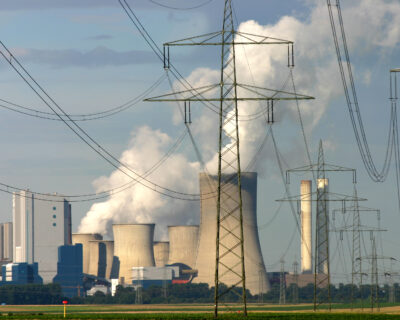Blogs

Understanding Cryogenic Shielding for Photon Energy Machines: An In-Depth Tutorial
Introduction
In the realm of photon energy machines, the importance of effective cryogenic shielding cannot be overstated. As the demand for precision in detecting low-energy photons grows, so does the need for advanced materials and techniques that ensure optimal performance in extreme conditions. This article delves into the fundamental principles of cryogenic shielding, exploring the latest innovations in materials such as:
- Multi-layer insulation
- Mica Tapes
These materials offer unparalleled thermal and electrical insulation capabilities. Furthermore, it examines the various types of cryogenic detectors, their applications, and the challenges faced in implementing effective shielding solutions. By highlighting recent advancements and future directions in this field, procurement managers will gain valuable insights into sourcing the right materials and technologies to enhance operational efficiency and drive success in their organizations.
Fundamentals of Cryogenic Shielding in Photon Energy Machines
Cryogenic shielding for photon energy machines involves methods and substances that reduce thermal transfer to delicate components operating at very low temperatures, particularly in devices where temperature control is essential for enhancing operational efficiency. The main aim of low-temperature insulation is to reduce thermal loads on detectors and other vital components, consequently enhancing their overall functionality and performance. Among the essential components employed in cryogenic protection are multi-layer insulation (MLI) and reflective surfaces, which are skilled at significantly reducing thermal radiation.
Additionally, our Mica Tape Products, including Mica Insulation Tape and Mica Sheet Tape, are designed for high-temperature resistance and electrical insulation, making them ideal for diverse applications, from household appliances to critical electrical systems. Mica Insulation Tape offers superior electrical insulation properties, ensuring reliability in high-temperature environments, while Mica Sheet Tape provides robust solutions for insulating large flat surfaces, particularly in aerospace and automotive applications. These tapes provide excellent flame resistance and dielectric strength, essential for electrical applications requiring safety measures against fire hazards.
Recent progress in substances, such as exfoliated-graphite-based flexible graphite, illustrates encouraging radio-wave electrical conductivity and absorption characteristics for electromagnetic protection, as noted by expert Hongtao Guan:
This work reports the radio-wave (200-2000 MHz) elec. cond. σ of exfoliated-graphite-based flexible graphite <.
Furthermore, statistics reveal that CNT/CMFs demonstrate an impressive specific protective effectiveness of 6147.3 dB cm. Additionally, a case study titled ‘Improving Pressure Detection Range with Composite Substances’ illustrates the ongoing innovation in composite substances, showcasing enhancements through the introduction of secondary components, although this often leads to challenges in sensitivity. Furthermore, there is a recognized need for additional scientific research on the magnetic and conductivity behavior of EMI barriers and their impact on effectiveness.
A thorough grasp of these fundamental ideas, combined with the most recent advancements in low-temperature shielding technologies and cryogenic shielding for photon energy machines, is essential for experts involved in the procurement and use of materials within energy systems.
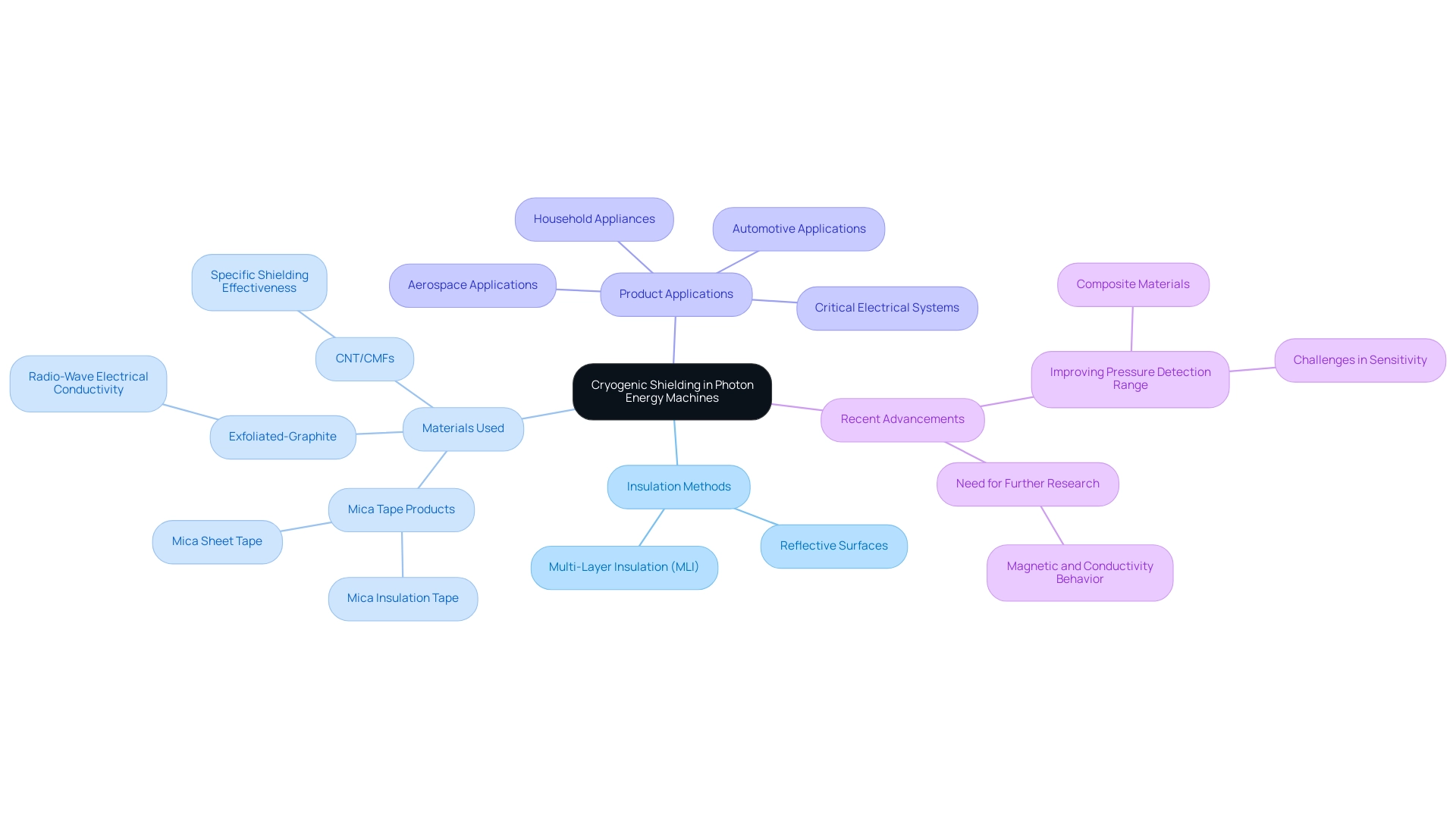
Types of Cryogenic Detectors and Their Applications
In the field of light energy applications, cryogenic detectors play a pivotal role, with superconducting transition edge sensors (TES) and phonon sensors being among the most prominent types. Superconducting TES are renowned for their exceptional sensitivity to low-energy particles, making them invaluable in fields such as astrophysics and quantum computing. Their operational principles allow for precise measurements, which is crucial for cutting-edge research and technology development.
Conversely, phonon sensors detect the energy of photons through the vibrations they generate in a solid medium, enabling a different yet complementary methodology for photon energy detection. Each detector type has unique benefits and operational needs, which necessitate the use of cryogenic shielding for photon energy machines to enhance their performance.
Recent advancements in superconducting technologies have highlighted the versatility of these detectors. For instance, Jochen Schieck from the Institut für Hochenergiephysik noted that this technology is now being utilized in various experiments, including those searching for dark matter and measuring coherent elastic neutrino-nucleus scattering. This aligns with the foundational insights provided by P. Verhoeve in his publication in J.
Low Temp. Phys., which outlines the critical role of these detectors in current research. Furthermore, statistics indicate that no sign of breakdown for biases up to 400 V was observed in the P-type Point Contact detector, underscoring the reliability of these technologies.
Additionally, case studies like the Superheated Superconducting Granules (SSG) illustrate the potential of superconducting detectors in diverse applications, such as X-ray imaging and dark matter detection, although the initial performance of the Bern Collaboration’s ORPHEUS detector indicated a need for further enhancements in superconducting behavior and the implementation of cryogenic shielding for photon energy machines to improve sensitivity.
Comprehending the nuances of these detectors, including their latest applications and advantages, is essential for procurement managers involved in the design and acquisition of energy systems. By staying informed about current developments, including the emergence of non-equilibrium detectors like superconducting tunnel junctions (STJ) and microwave kinetic inductance devices (MKID), which promise faster response times and suitability for large detector arrays, professionals can make strategic decisions that align with the evolving landscape of energy technologies.
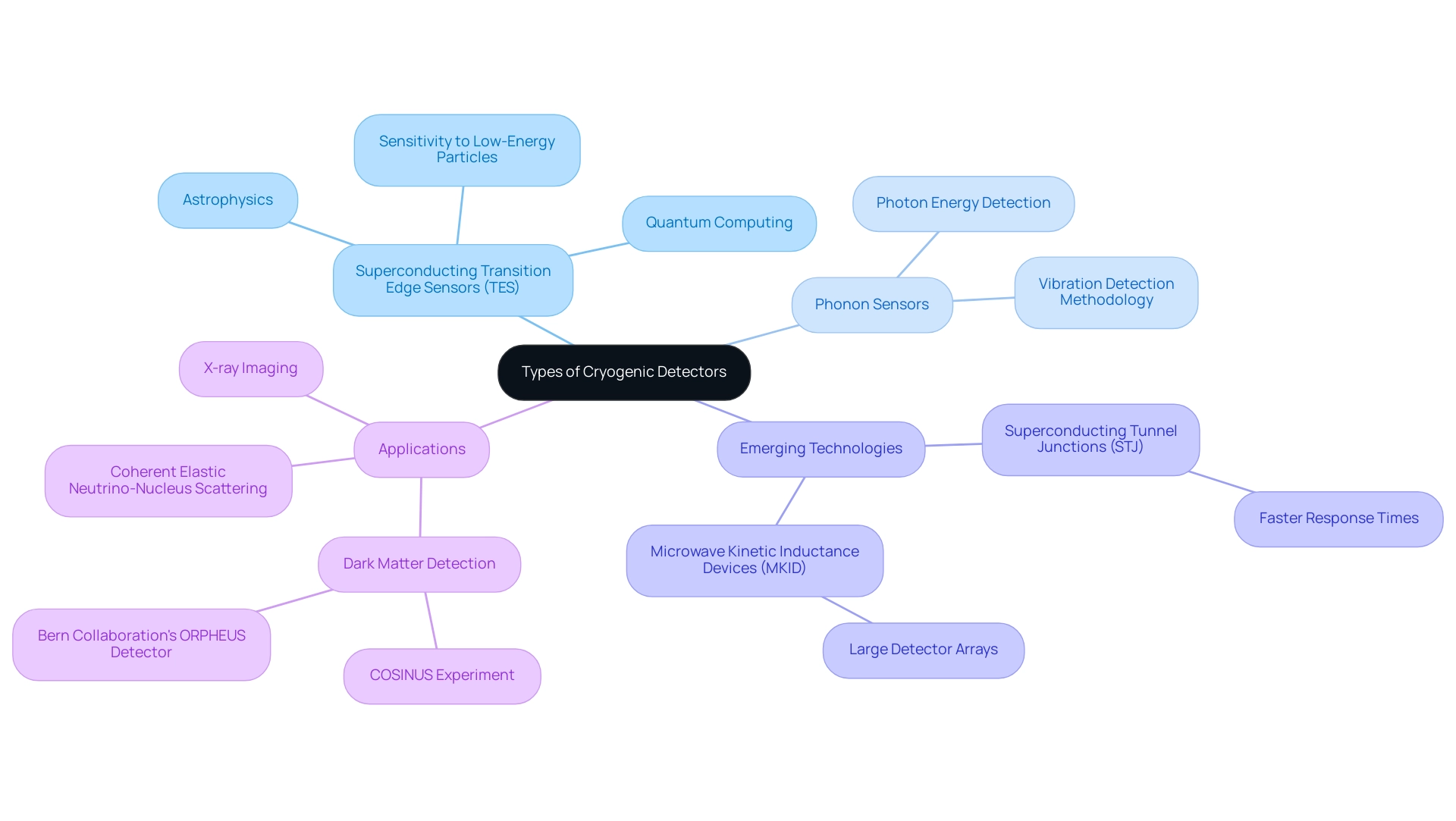
Advancements in Superconducting Nanowires for Photon Detection
Recent advancements in superconducting nanowires have significantly improved light detection capabilities, establishing them as a cornerstone in low-temperature systems. These nanowires exhibit exceptional sensitivity and rapid response times, making them ideal for diverse applications ranging from medical imaging to quantum computing. It is important to note that single-photon detectors can be categorized into photon-number-resolving and non-photon-number-resolving types, each with distinct capabilities and limitations.
Specifically, the integration of superconducting nanowires into photon-counting electronics not only augments the performance of cryogenic setups but also improves the effectiveness of cryogenic shielding for photon energy machines, facilitating more accurate measurements. A notable study on current-crowding-free superconducting nanowire single-photon detectors (SNSPDs) demonstrated that locally irradiating the straight segments with helium ions, while leaving the bends unirradiated, resulted in an impressive internal detection efficiency of 94% at a wavelength of 780 nm and a dark count rate of just 7 MHz. Additionally, the ultrashort avalanche region in InSe/BP 2D/2D heterojunctions achieves carrier multiplication up to 3 ×, further emphasizing the advancements in light detection technologies.
As Vitali, V. mentions in his work on ‘Single-Photon Detectors for Quantum Integrated Photonics,’ these innovations emphasize the significant potential of nanowires to overcome existing limitations in light detection. As these technologies continue to evolve, procurement managers must remain vigilant in keeping abreast of the latest materials and techniques. This knowledge will empower them to source optimal solutions that align with their organizational needs, ultimately enhancing operational effectiveness in the ever-competitive landscape of light detection.
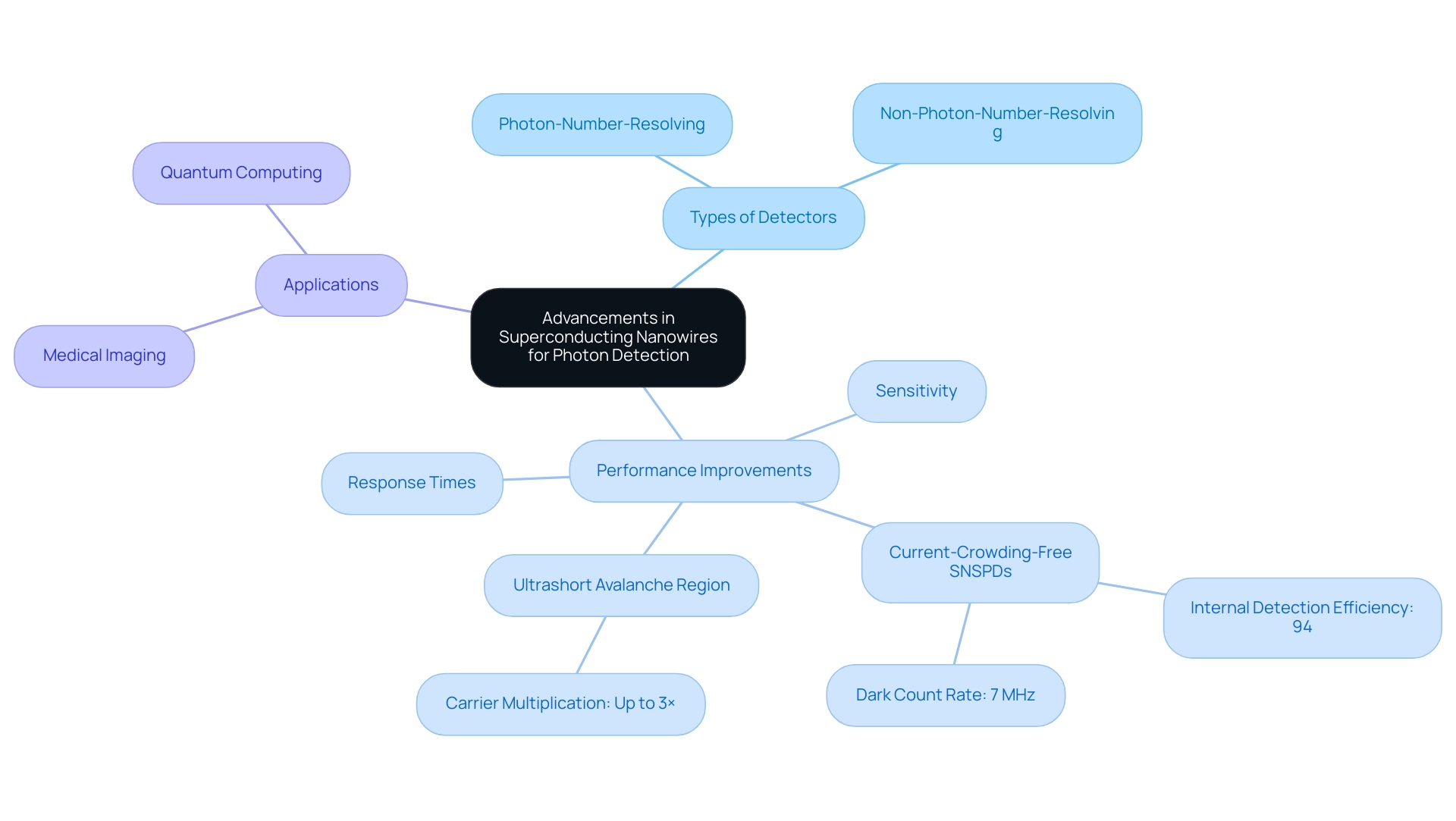
Challenges in Implementing Cryogenic Shielding for Photon Energy Machines
The use of cryogenic shielding for photon energy machines introduces various notable difficulties, particularly in noise reduction and system efficiency. As highlighted in a comprehensive review by Stephen Kry, ‘the technological immaturity of various active shielding methods, including magnetic shielding, has not been fully developed or tested despite its potential advantages over passive shielding.’ This challenge highlights the importance of careful design and component selection, particularly when striving to attain optimal system efficiency at low temperatures.
In this context, Domadia’s range of Mica Tapes presents a valuable solution, offering high-temperature resistance and exceptional electrical insulation properties essential for critical applications in electrical engineering. Our Mica Tapes are designed to withstand extreme conditions, ensuring reliability and durability. Procurement managers must be acutely aware of material compatibility with low-temperature conditions, as thermal expansion can introduce additional complications.
The appendix serves as a valuable reference handbook for cryostat design, featuring seventy tables compiled from expert contributions, which can guide the design process. Addressing these multifaceted challenges is crucial for the successful deployment of cryogenic shielding for photon energy machines in various applications. Recent studies, including the case study titled ‘Challenges in Active Protection Research,’ indicate that overcoming these hurdles not only enhances performance but also supports the advancement of innovative technologies that can benefit from improved thermal insulation solutions.
To learn more about how Domadia’s Mica Tapes can enhance your projects, visit our website or contact our expert team today.
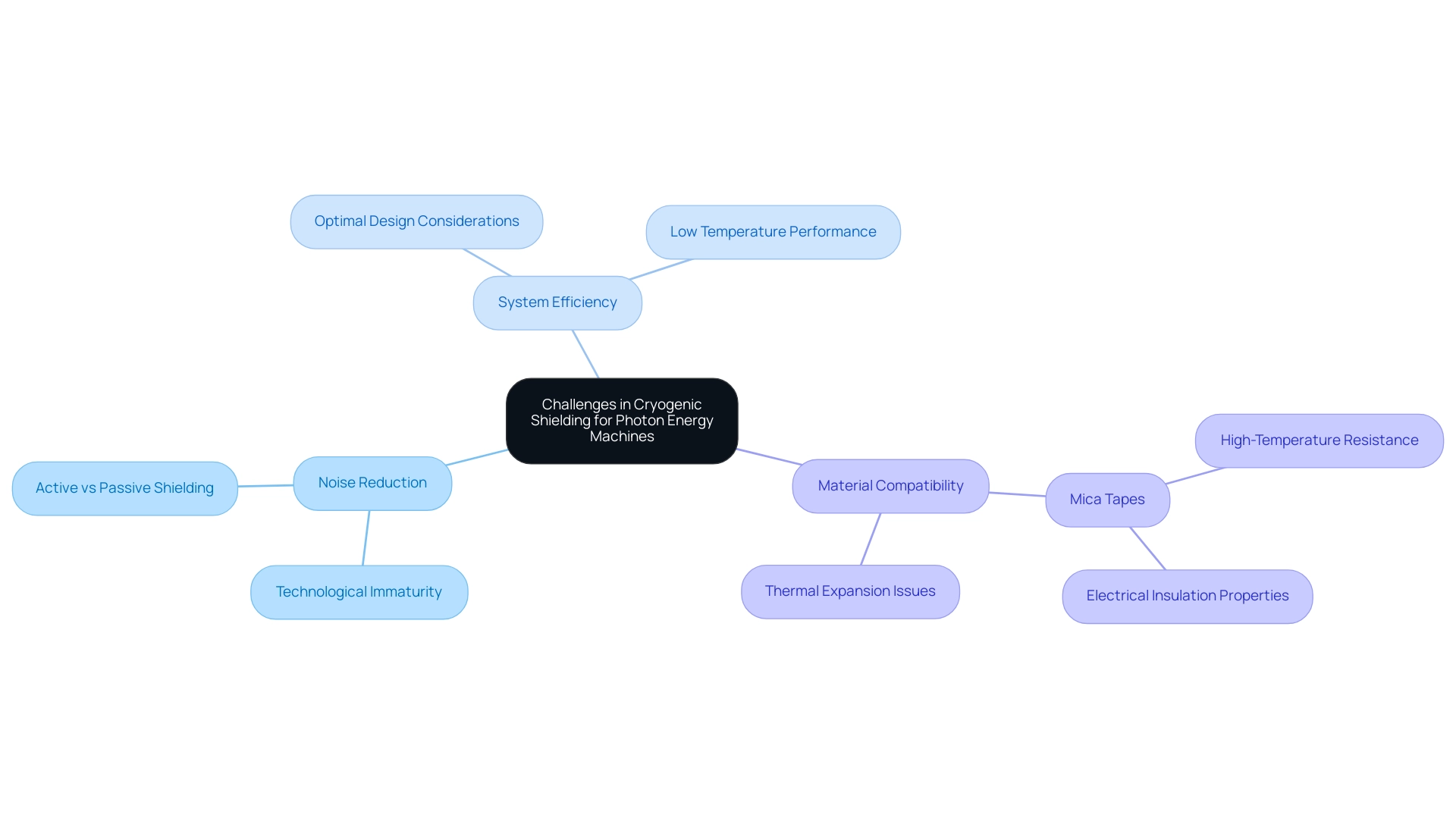
Future Directions in Cryogenic Shielding Technologies
The terrain of low-temperature protection technologies is advancing swiftly, propelled by continuous study into inventive substances and methods that greatly improve performance while reducing expenses. Advanced composite substances, including Mica Tapes offered by Domadia, are at the forefront of this evolution, providing superior thermal insulation characteristics essential for optimizing low-temperature systems. These high-temperature electrical insulation solutions are essential for procurement managers seeking reliable materials to meet the increasing demand from sectors such as energy and healthcare, particularly in the Asia-Pacific region.
Mica Tapes are known for their excellent dielectric strength, thermal stability, and resistance to high temperatures, making them an ideal choice for various applications. As rapid industrialization continues, the urgency for procurement managers to adapt their strategies is paramount. Furthermore, the integration of artificial intelligence in monitoring and maintaining low-temperature environments is emerging as a transformative trend, enabling real-time adjustments that improve system efficiency and reliability.
Competitor benchmarking analysis can provide valuable insights into strengths, weaknesses, opportunities, and threats (SWOT), helping procurement professionals refine their strategies. As one researcher noted, ‘The future of cryogenic shielding for photon energy machines will be shaped by our ability to innovate in thermal insulation methods.’ By focusing on these developments and leveraging high-quality materials like Mica Tapes, procurement managers can secure cutting-edge solutions that not only meet current operational demands but also position their organizations strategically for future growth in an increasingly competitive landscape.
To explore our range of Mica Tapes and learn more about how they can benefit your business, visit our website or contact our expert team today.
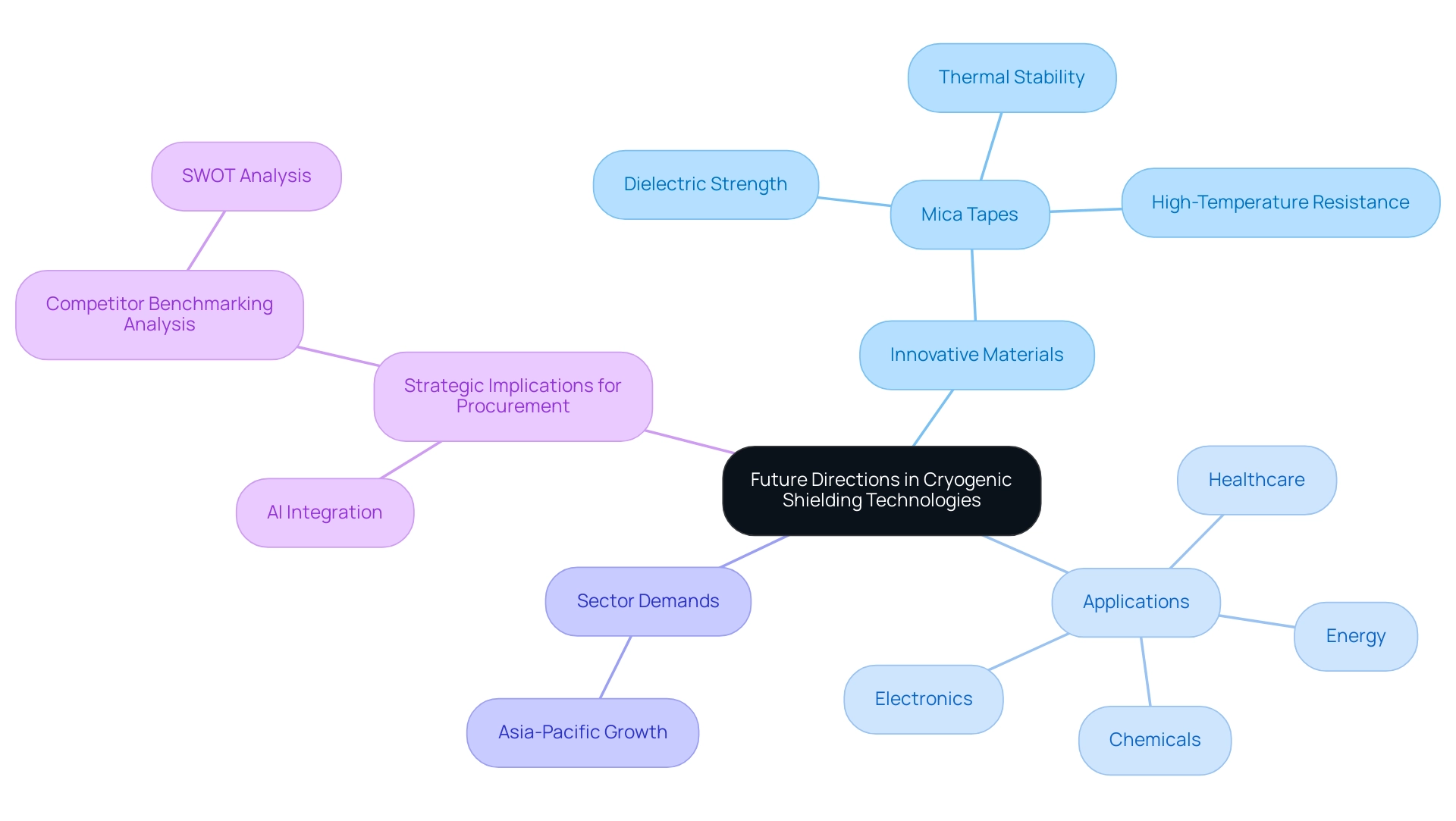
Conclusion
The exploration of cryogenic shielding in photon energy machines underscores its critical role in enhancing the performance and reliability of sensitive detection systems. By utilizing advanced materials such as multi-layer insulation and Mica Tapes, professionals can effectively mitigate thermal loads and optimize the functionality of cryogenic detectors. This understanding is paramount for procurement managers tasked with sourcing materials that not only meet current operational requirements but also align with future technological advancements.
As demonstrated throughout the article, the diverse applications of cryogenic detectors, including:
- Superconducting transition edge sensors
- Phonon sensors
highlight the necessity for tailored shielding strategies. Staying informed about the latest advancements in superconducting nanowires and other innovative technologies will empower procurement managers to make strategic decisions that enhance operational efficiency and drive success in their organizations.
Looking ahead, the integration of artificial intelligence and the development of advanced composite materials will further revolutionize cryogenic shielding technologies. By embracing these innovations and focusing on high-quality materials like Mica Tapes, procurement professionals can position their organizations for growth and competitiveness in the rapidly evolving landscape of photon energy systems. The future of cryogenic shielding is bright, and with it comes the promise of improved performance and reliability in a range of critical applications.


